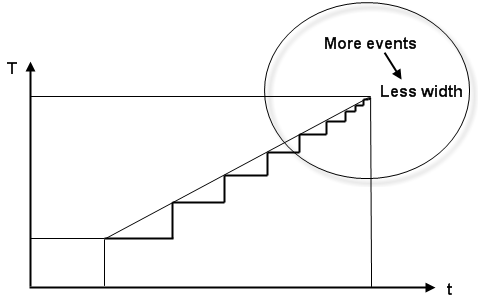It is an integer from 1 to 31327 that DADOS uses as a seed to generate random numbers for simulations, according to Monte Carlo techniques. It can be changed in order to force to modify random values during simulations but the results will be essentially the same if the simulation box is large enough and, thus, the simulation results are statistically relevant.
Number of bits used by DADOS to split the simulation box. The default value for this parameter is 19, which means that the maximum number of boxes will be 524288. See box split for more information.
Parameter is used by DADOS to establish charge update frequency. It is maximum relative error allowed in Fermi level updates. It can be a value between 0 and 1. See charge update for details.
It is the time when the first snapshot is taken. It has the same function as Start Output Time in the Set_Output_Options command, although the value here is just to initialize the simulation.
This parameter is only used for academic purposes. Different options can be set:
0 - Normal, no debug.
1 - No interactions between particles: DADOS will not simulate pairing, recombinations, captures, clustering,... only suface effects will take place.
2 - Intrinsic Fermi level: Silicon will be simulated as an intrinsic materials, independently of the dopants. It can be used either for testing or for speeding up simulations where there are no dopants.
3 - Maxwell-Boltzman statistics instead of Fermi-Dirac: DADOS uses, by default, Fermi-Dirac statistics instead of Maxwell-Boltzman approximation, because it is more accurate. This parameter should only be set for academic purposes, in order to compare simulation results with analytic solutions using Maxwell Boltzman approximation. No relevant speeding of the simulation is expected.
4 - Extended defects periodic in YZ plane. By default, the growth of extended defects ins constrained by the simulation box walls. This will result in a simulation artifact where no very large lateral (YZ) dimensions are used in cases with planar symmetry. The present option would avoid such an artifact. Notice that this option does not set periodicity for mobile point defects but only for extended defects (I311, dislocation loops, voids, platelets,...). Do not use this option for cases with no planar symmetry.
DADOS implements temperature change by means of a discrete process, i.e., following a set of steps. However, at low temperatures, the number of events (basically jumps), is lower than at high ones. That is why DADOS has implemented a new method: The steps width (in time) depends on the temperature. The figure below shows this:

The algorithm is:
This way, we approximately guarantee that the number of events occured in every step is the same.